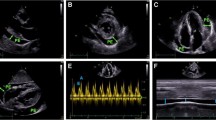Abstract
New directions in the diagnosis and treatment of pericardial diseases synthesize the achievements of modern imaging with molecular biology and immunology techniques. Comprehensive and systematic implementation of new techniques of pericardiocentesis, pericardial fluid analysis, pericardioscopy, epicardial and pericardial biopsy, as well the application of comprehensive molecular biology and immunology techniques for pericardial fluid and biopsy analyses have opened new windows to the pericardial diseases, permitting early specific diagnosis and creating foundations for etiologic treatment in many cases.
In patients with recurrent pericarditis, resistant to conventional treatments, as well as in patients with neoplastic pericarditis an alternative intrapericardial treatment regimen was suggested by the Taskforce on Pericardial Diseases of the World Heart Federation. Intrapericardial application of medication avoids systemic side effects with increased local efficacy. The following protocols are proposed: CIRP (colchicine in recurrent pericarditis) – colchicine vs placebo in chronic/recurring pericarditis without pericardiocentesis; TRIPE (triamcinolone in pericardial effusion) – intrapericardial instillation of triamcinolone + 6 months colchicine vs pericardial puncture without instillation + 6 months colchicine; NEPIN (neoplastic effusion and pericardial instillation) – pericardiocentesis and drainage + intrapericardial instillation of cisplatin or thiotepa.
Zusammenfassung
Innovationen in der Diagnostik und Therapie der Perikarderkrankungen stellen die Implementierung molekularbiologischer und immunologischer Methoden und die Anwendung der Perikardioskopie für die gezielte epikardiale und/oder perikardiale Biopsie dar. Damit konnte ein wesentlicher Beitrag zur Ätiologie und Pathogenese der Perikarderkrankungen und zu einer pathophysiologisch und ätiopathogenetisch begründeten Therapie geleistet werden.
Bei Patienten mit rezidivierenden Perikarditiden, die nicht auf eine herkömmliche antiphlogistische Therapie ansprachen, oder bei Patienten mit malignem Perikarderguss ergibt sich durch intraperikardiale Instillation von kristalloidem Triamcinolon oder Cisplatin die Möglichkeit einer hoch dosierten, lokoregionalen Therapie ohne gravierende systemische Nebenwirkungen. Folgende Therapieprotokolle wurden dafür vorgeschlagen und sollen im Rahmen einer randomisierten Therapiestudie eingesetzt werden: CIRP (Colchicin bei Patienten mit rezidivierender Perikarditis ohne Perikardpunktion); TRIPE (Perikardpunktion und intraperikardiale Therapie mit Triamcinolon vs. Plazebo + sechs Monate Colchicin); NEPIN (Perikardpunktion und intraperikardiale Therapie mit dem Cisplatin oder Thiothepa).
Similar content being viewed by others
Author information
Authors and Affiliations
Additional information
Rights and permissions
About this article
Cite this article
Maisch, B., Ristić, A. & Seferovic, P. New Directions in Diagnosis and Treatment of Pericardial Disease A Project of the Taskforce on Pericardial Disease of the World Heart Federation. Herz 25, 769–780 (2000). https://doi.org/10.1007/PL00001996
Issue Date:
DOI: https://doi.org/10.1007/PL00001996




